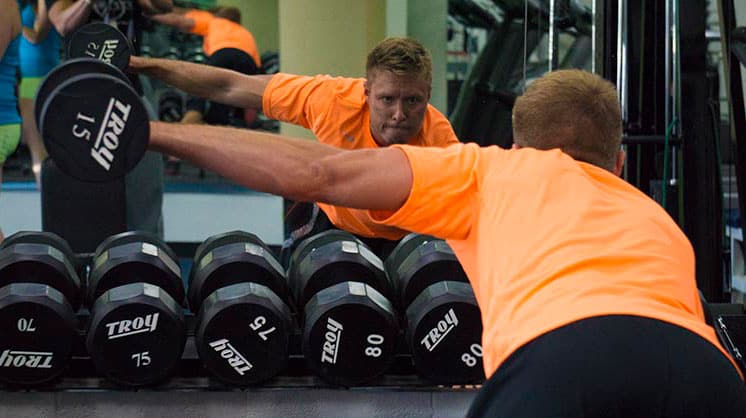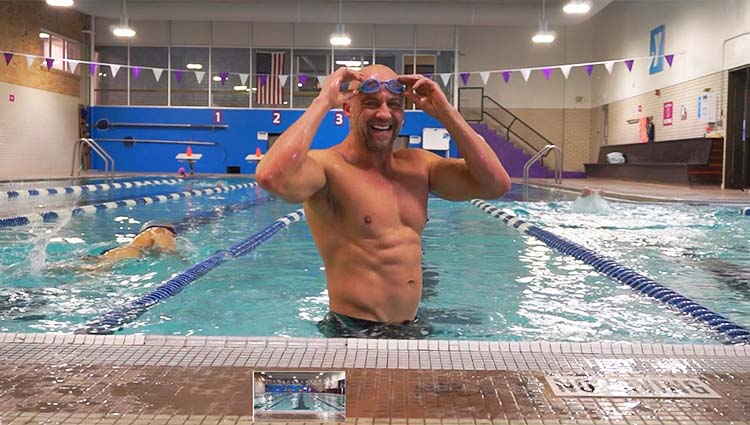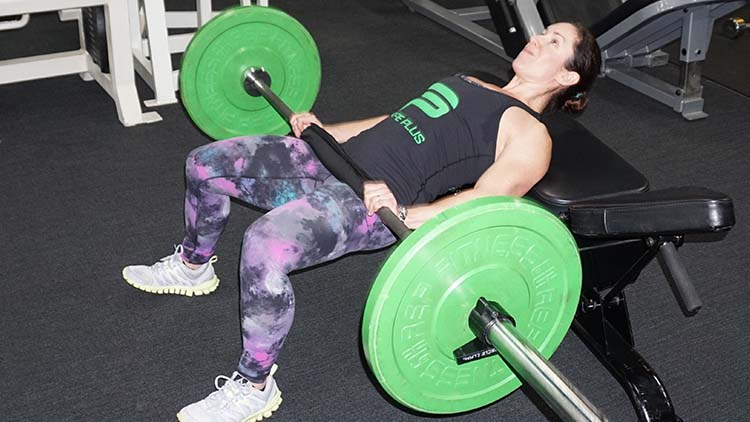More than 5,200 feet above sea level, the Denver metro area can be a challenging environment for strength training. The high altitude leaves the air with less free oxygen, forcing the body to adapt in many ways. A trusted provider of personal training programs, Shape Plus understands the challenges and risks associated with elevation training. Let’s dig deeper into this topic to better understand how personalized training programs lead to safer, more effective results.
Understanding the Effects of Altitude Training
At higher altitudes, the atmospheric pressure decreases, leading to lower oxygen levels in the air. Reduced oxygen availability leads to a phenomenon called hypoxia, which triggers a cascade of physiological changes in the body as it attempts to adapt.
One of the most significant adaptations is the increased production of red blood cells (erythropoiesis) in response to the release of erythropoietin (EPO) hormone. A higher concentration of red blood cells enhances the body’s oxygen-carrying capacity, helping to counteract the reduced oxygen levels at altitude. The body also undergoes changes in its cardiovascular, respiratory, and metabolic systems to cope with the hypoxic environment.
Altitude training can have a significant impact on both endurance and strength training performance. Endurance athletes may experience improved aerobic capacity due to the increased red blood cell count and enhanced oxygen transport. This can lead to better performance when the person travels to lower altitudes.
That said, strength training for women and men at high altitudes can be challenging due to reduced oxygen availability, which may impair muscle function and make it harder to sustain high-intensity efforts. Shape Plus personal trainers in Denver understand the complexities of high altitude training and the unique adaptations required to optimize performance. They specialize in designing tailored training programs that take into account the physiological changes associated with high altitude, helping athletes safely and effectively reach their performance goals.
Training Strategies for Altitude Adaptation
Gradual acclimatization is a critical strategy for helping the body adapt to the unique challenges of high altitude environments. One effective technique involves ascending slowly, allowing the body ample time to adjust to changes in atmospheric pressure and oxygen levels.
For climbers and hikers, this process means breaking an ascent into smaller stages and spending several days at each altitude increment before progressing to a higher elevation. This gradual approach to altitude exposure minimizes the risk of altitude sickness and enables the body to make the necessary physiological adaptations for optimal performance.
For athletes, acclimation may mean engaging slowly in specific training programs that involve gradual increases in duration and intensity. During this time, it is essential to stay hydrated and maintain adequate nutrition to support the body’s increased metabolic demands.
To improve cardiovascular fitness at high altitudes, interval training, and high-intensity workouts can be particularly effective. These training methods (which involve alternating periods of intense exercise with periods of rest or low-intensity activity) can help increase the body’s oxygen-carrying capacity and enhance its ability to cope with reduced oxygen levels.
Strength training exercises that target muscular endurance and power are also essential for optimal performance in high-altitude conditions. Exercises such as squats, lunges, and deadlifts can help build leg strength and power, while upper-body exercises like push-ups, pull-ups, and rows can improve overall muscular endurance.
Combining these strength training exercises with plyometric and functional movement drills can further enhance an athlete’s ability to maintain power and stability in challenging altitude conditions. By incorporating these strategies into a training regimen, athletes can effectively acclimate to high altitudes and optimize their performance.
Proper Nutrition and Hydration at Altitude
Proper nutrition and hydration are critical factors in supporting altitude training because the body’s demands for energy and fluid increase at higher elevations. As you ascend to higher altitudes, the air becomes thinner and the body has to work harder to supply oxygen to the muscles and vital organs. This increased workload necessitates optimal fueling through a balanced diet, rich in carbohydrates, proteins, and fats. This helps support energy production, muscle repair, and overall well-being.
Adequate hydration at altitude is also essential since fluid losses through respiration and perspiration are amplified due to lower humidity and increased breathing rates. Inadequate hydration can lead to impaired performance, altitude sickness, and severe dehydration.
To ensure optimal performance at altitude, athletes must prioritize increased fluid intake and maintain an adequate electrolyte balance. Drinking water alone may not be sufficient, because electrolytes such as sodium, potassium, and magnesium are also lost through sweat. Consuming sports drinks or adding electrolyte supplements to water can help replenish these essential minerals and prevent muscle cramps, fatigue, and other symptoms associated with electrolyte imbalances.
Nutritional guidelines for altitude training recommend a diet consisting of 60-70% carbohydrates to support glycogen stores, 15-20% proteins for muscle repair and growth, and 15-20% fats for long-lasting energy. To achieve this balance, athletes should plan meals around whole grains, lean proteins, healthy fats, and plenty of fruits and vegetables. Consuming smaller, more frequent meals can also help you maintain energy levels and reduce the risk of gastrointestinal discomfort at higher altitudes.
Monitoring and Assessing Altitude Training Progress
Training at high altitude requires a personalized approach that carefully tracks daily, weekly and monthly progress. This allows trainers to make adjustments and further tailor the workouts to best fit each person’s unique goals, limitations, and specific needs.
By consistently assessing a client’s progress, trainers can identify strengths and weaknesses, allowing them to make adjustments to the training program and ensure that the athlete is constantly improving. Regular performance evaluations can also help prevent overtraining, which could lead to injuries or diminished performance.
At Shape Plus, our personal trainers possess extensive expertise in conducting assessments and adapting training programs to cater to each individual’s unique needs and goals. They employ advanced technology and tools to meticulously measure and track an athlete’s progress during altitude training. This data-driven approach provides valuable insights into how an athlete’s body is adapting to the stressors of high-altitude workouts.
Tools such as pulse oximeters and heart rate monitors provide real-time feedback on an athlete’s oxygen saturation and cardiovascular response, allowing our trainers to make informed decisions about training intensity and duration. Shape Plus trainers also leverage state-of-the-art software to analyze workout data, ensuring that each athlete’s training program remains tailored to their specific requirements. This marriage of technology and expertise ensures that Shape Plus clients can reach new heights in their athletic performance.
Peak Performance Demands a Personalized Approach
Elevation training in Denver’s altitude presents unique challenges and benefits to athletes because the thinner air places increased demands on the body. The right training can lead to enhanced endurance, increased strength, and better overall athletic performance. At the same time, adapting to high-altitude conditions requires careful planning and expert guidance.
Shape Plus is a trusted resource for personalized training programs specifically tailored to altitude training needs, ensuring that athletes can safely and effectively acclimate to Denver’s elevated environment. With the guidance of Shape Plus personal trainers, clients can unlock their full potential by elevating their endurance and strength training to new heights.
Don’t miss the opportunity to experience the transformative power of altitude training with Shape Plus. Schedule a consultation today and let our expert Denver personal training team help you achieve your fitness goals in the Mile High City.





